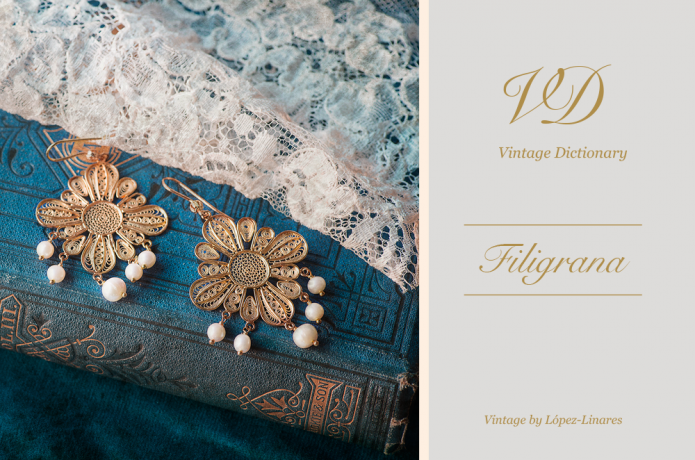The word filigree comes from the latin filum, which means “thread”, and “, so a filigree is literally a granulated thread. However it is in fact two twisted threads, and not just one.
The art of filigree is very ancient. We have archaeological remains of this kind of jewelry from over 3,000 years ago: this technique was actually practiced by Egyptian, Phoenician and Greek cultures, who brought it into Spain.
The procedure is made with two threads of a different thickness: The thicker one is used to carve the outline of the piece and the thinner to create the details that are so distintive of this art. The metalsmith has to use a kind of tweezerds in order to make the filler and cover all the holes among threads and it’s in this part of the artwork when you can see how good he is with his hands. His skills are spectacular. The solder must be very light to avoid leaving a mark.
Once the piece has been totally filled it’s placed over a platform of vegetal coal. Then it’s sprinkled with solder powder and welded using an alcohol blowlamp. Now that the solder has been finished, the metalsmith will wait until it gets cold to polish and shine the piece.
The result is a delicate and light piece of jewel that reminds us of a soft and fine lace. An unique and unrepeatable piece.
Still today there are artisans who use ancient techniques and a huge dose of patience to create pieces that will have you in awe.
Filigree is with no doubt one of the most beautiful techniques on jewelry.

